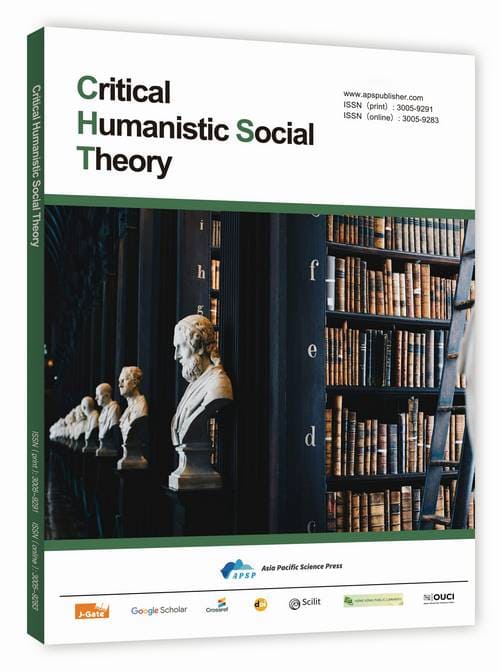The Contemporary Expression of Nationalized Comedy: Observing the Innovative Practices of the Chinese Animation School through Nobody
DOI:
https://doi.org/10.62177/chst.v2i3.598Keywords:
Nationalized Comedy, Chinese Animation School, Two-Dimensional Ink-and-Wash, Journey to the West MotifAbstract
Taking the latest production of the Shanghai Animation Film Studio (hereafter referred to as SAFS), Nobody, as a case study, this paper explores the innovative practice of nationalized comedy within the contemporary Chinese animation school. Building upon the creative experience of Yao-Chinese Folktales, the film employs a combination of two-dimensional ink wash hand-drawing and digital craftsmanship. Narratively, it deconstructs the classic Journey to the West motif from the perspective of “small demons,” transforming the grand narrative into a humorous expression of grassroots experience through the structural device of “pretending to join the pilgrimage—repeatedly being exposed.” The film’s comedic mechanisms emerge from a fusion of identity dislocation, trick deconstruction, and self-ridicule, where the humor relies not only on semantics but also on the interplay of audiovisual rhythm and the audience’s shared knowledge. On the aesthetic level, the integration of ink-wash blank space, rich color schemes, and operatic music turns nationalized style into an intrinsic emotional resource for narration. From a vertical comparative perspective, the film shifts the “hero-centered” focus toward the “ordinary condition,” thereby moving from “deification” to “humanization.” From a horizontal comparative perspective, it demonstrates how the SAFS comedy tradition is inherited while simultaneously infused with modern terms and social metaphors to enhance audience resonance. Furthermore, by paying tribute to SAFS’s own classics, the film links stylistic memory with contemporary sentiment. This study argues that Nobody continues the creative ethos of “neither repeating oneself nor imitating others,” and illustrates that the integration of national aesthetics with contemporary terms and comedic strategies represents a feasible pathway for the Chinese animation school to move toward a “new classic.”
Downloads
References
Sun, L. (2024). Rethinking the origins of the Chinese animation school. Contemporary Animation, (3). Retrieved from https://ieaaf.org/240718.html
Chen, F. (2020). An analysis of the transformation of the Chinese school of animation from the perspective of cultural ecology. Contemporary Cinema, (3), 168–172.
Cao, X. (2024). Upholding fundamental principles and fostering innovation: Carrying forward our cause into the future—the innovative development of the Chinese animation school and the nationalization of Chinese animation in light of current creative practices. Contemporary Animation, (2).
Gou, Q. (2021). Ink-wash animation: The third cross-media revolution of painting and film. Contemporary Animation, (2), 16–21.
Sun, L. (2024). Rethinking the origins of the Chinese animation school. Contemporary Animation, (3). Retrieved from https://ieaaf.org/240718.html
Chen, F. (2020). An analysis of the transformation of the Chinese school of animation from the perspective of cultural ecology. Contemporary Cinema, (3), 168–172.
Hu, Y. (2025). The convergence of originality and adaptation—Teacher Chang Guangxi on the historical transformation and industrial memory of Chinese animation. Movie Review, (18).
Guan, M. (2024). The inheritance and innovation of Chinese animation: The contemporary path of Shanghai Animation Film Studio. Shanghai Art Review, (04), 20–21.
Dai, Y., Liang, W., Xv, W., Wu, Y., & Wang, Y. (2023). Exploring the continuance intention of young Chinese females to use social media: The case of Xiaohongshu. In Proceedings of the 2023 9th International Conference on Humanities and Social Science Research (ICHSSR 2023) (pp. 1715–1732). Atlantis Press. https://doi.org/10.2991/978-2-38476-092-3_220
Feng, X., Wu, Z., Du, M., & Liang, W. (2024). Digital social sport political communication in China: A new perspective of theory, issues and paradigm. In Proceedings of the 2024 3rd International Conference on Comprehensive Art and Cultural Communication (CACC 2024) (Vol. 863, p. 246).
Gu, P., & Liang, W. (2023). The inner dynamics of kidult culture: Trending toys and games, theme parks, and animated movies. SHS Web of Conferences, 167, 01010. EDP Sciences. https://doi.org/10.1051/shsconf/202316701010
Downloads
How to Cite
Issue
Section
License
Copyright (c) 2025 Hu Yang, Yuming Cai

This work is licensed under a Creative Commons Attribution-NonCommercial 4.0 International License.
DATE
Accepted: 2025-09-16
Published: 2025-09-26
















